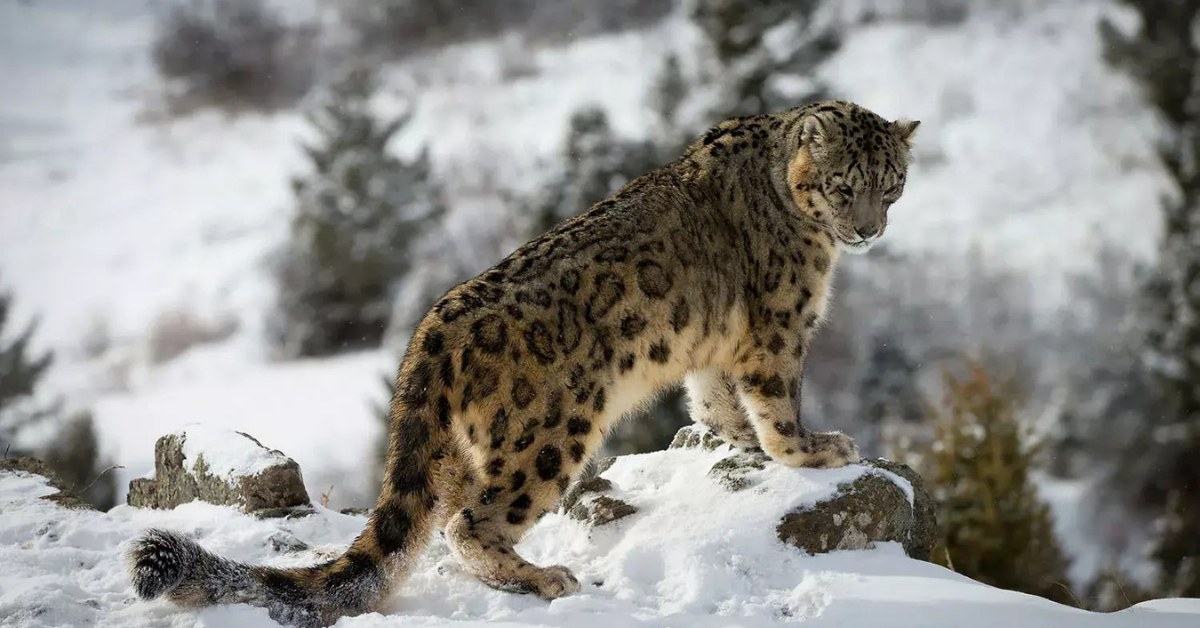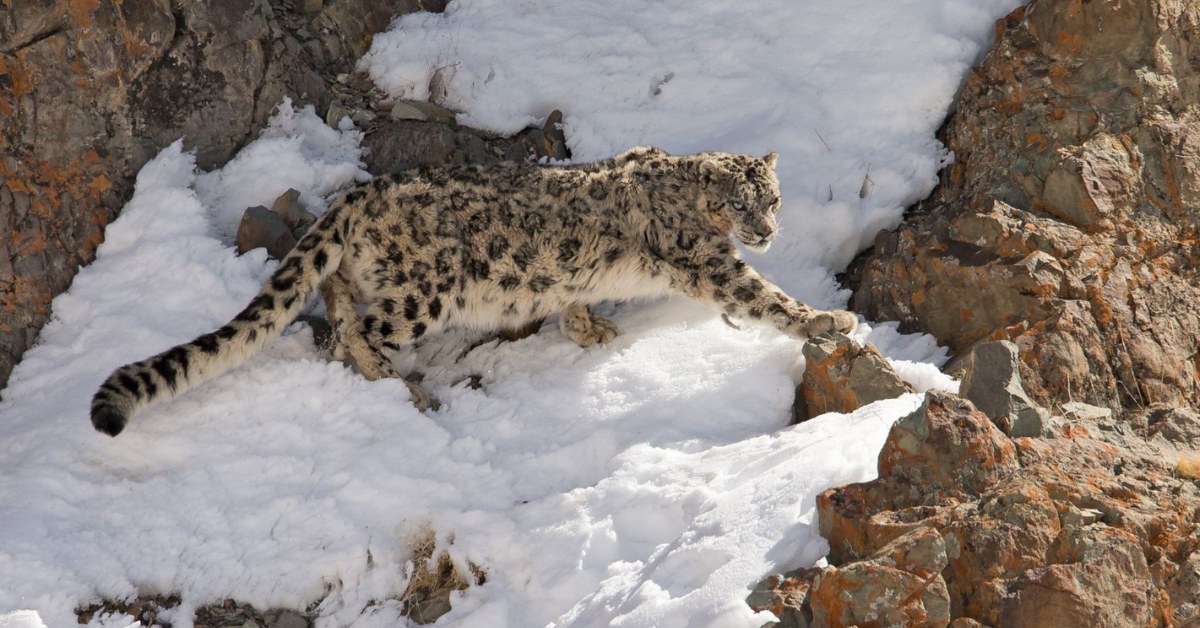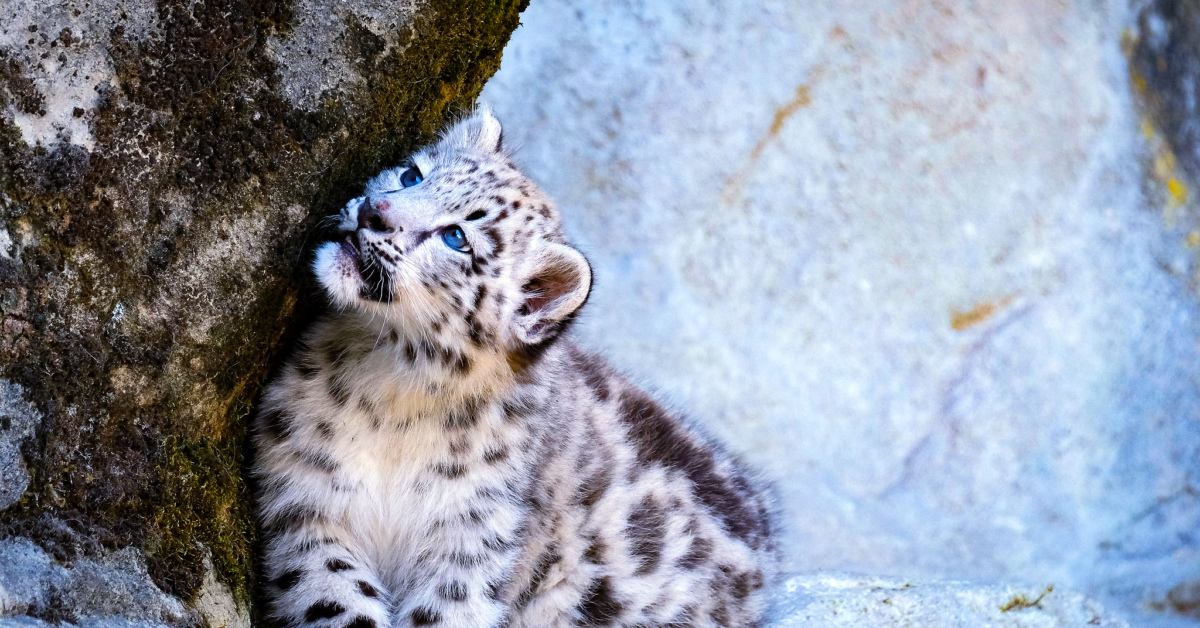Within the windswept landscapes of Ladakh, the place the Himalayas reduce throughout the sky and silence hangs heavy over snow-dusted valleys, a uncommon and mysterious predator nonetheless prowls. The snow leopard, typically known as the “ghost of the mountains,” is an animal most individuals won’t ever see. It strikes silently, hidden by its thick camouflage, and has remained largely untracked for many years. However current years have led to a shift, not solely in how we research these elusive cats, however in how the individuals of Ladakh dwell alongside them.
Monitoring the elusive predator
In keeping with India’s most in depth snow leopard survey so far, stories Mongabay, Ladakh is house to an estimated 477 snow leopards. That’s almost 68% of the nation’s complete snow leopard inhabitants, of round 718. This two-year research, protecting 59,000 sq. kilometres of the trans-Himalayan area, marked a serious milestone for snow leopard analysis.
Researchers walked greater than 6,000 kilometres, recorded almost 10,000 indicators of snow leopard presence, and put in 956 digital camera traps in excessive, medium, and low-density zones. These traps captured over 26,000 photos.
Commercial
Utilizing the unreal intelligence software program known as CaTRAT, skilled particularly to recognise Himalayan wildlife, scientists recognized particular person snow leopards by the distinctive patterns on their foreheads, extra dependable than facet markings, which will be distorted by wind-ruffled fur. From 126 recognized people, the group used spatial capture-recapture fashions to estimate a complete inhabitants of 477 snow leopards in Ladakh.

A imaginative and prescient for coexistence
However whereas these figures are spectacular, the actual success lies in what is occurring on the bottom.
On the centre of Ladakh’s conservation effort is the Snow Leopard Conservancy India Belief (SLC-IT), an initiative based in 2003 by mountaineer Rinchen Wangchuk and biologist Rodney Jackson. In 2013, after Wangchuk’s passing, Dr Tsewang Namgail returned from the US, the place he had been working as a wildlife biologist, to take over as director. His mission was to proceed the work of constructing concord between individuals and predators.
One of many conservancy’s most essential initiatives is a livestock insurance coverage scheme designed to scale back human-wildlife battle, a standard problem in pastoral communities. Every family contributes Rs 400 per yr to a village fund. If a snow leopard kills livestock, the household is compensated, they obtain Rs 5,000 for a small animal and Rs 7,000 for a bigger one.
Residing alongside the ferocious predator isn’t a dream for the pastoral communities of Ladakh. However sustaining their livelihoods via schemes like this makes it potential. Namgail says the felines are fondly known as ‘Ri Gyancha’, which interprets to ‘ornaments of the mountains’.
Tourism that provides again
This transformation in angle is partly because of the financial incentives linked to the presence of snow leopards. A serious success story has been the Himalayan Homestay Programme, launched in 2001. It started with a easy thought, as a substitute of constructing vacationer camps that generate waste, why not have guests keep in native properties? The conservancy surveyed villages and located sturdy help for the idea.
Commercial

In the present day, greater than 200 homestays function in 40 Ladakhi villages. “These funds are created uniquely: 10 p.c of all homestays’ revenue goes right into a ‘village conservation fund’, which is utilized by villagers for tree planting, rubbish cleansing, and upkeep of their cultural heritage, similar to mani partitions, chortens, and sacred juniper stands,” explains Dr Namgail.
Selecting to remain in certainly one of these homestays generates funds for communities that they use to guard their mountain surroundings. The villagers additionally host friends on a rotational foundation. “That is performed in order that no single household can monopolise the vacationers. As a result of if that had been to occur, it will create disharmony within the village,” he says.
Safeguarding livestock and landscapes
The Conservancy additionally helps the development of predator-proof livestock enclosures utilizing low-cost and domestically sourced supplies. “Villagers present the labour whereas SLC-IT offers wire mesh, doorframes, beams, and wood poles,” says Namgail.
The snow leopard performs a key function in sustaining ecological stability. It preys on herbivores such because the Himalayan blue sheep and Asiatic ibex, conserving their populations in verify and stopping overgrazing. “These herbivores feed on alpine pastures that develop on the slopes of the mountain ranges. By controlling the inhabitants of those sheep and goats, the snow leopard offers the grasses and vegetation an opportunity to regenerate,” Dr Namgail explains.

That ecological stability has knock-on results. “Today we’re receiving extra rain and fewer snow. Because the rainwater flows down the slopes, the free soil additionally goes with it,” he says. The soil is loosened by the grazing exercise of goats. The presence of the snow leopard might help scale back such erosion, providing some safety in opposition to the growing threat of floods.
Threats on the horizon
Nonetheless, there are rising threats. Ladakh is house to a pure neighborhood of carnivores, together with wolves, lynx, brown bears, foxes, and now feral canine. However not like the others, feral canine are a man-made disaster. They pose a severe risk to each snow leopards and wolves, and the scenario will solely worsen if left unchecked.
Commercial
Infrastructure growth additionally dangers fragmenting essential corridors that join Ladakh’s snow leopards to populations throughout Tibet, Nepal, Pakistan, and the Karakoram. Its distinct ecological and cultural id requires context-specific growth. One-size-fits-all fashions from elsewhere are unlikely to work right here.
A mannequin for the Himalayas
Encouragingly, the survey aligns with worldwide frameworks like PAWS (Inhabitants Evaluation of the World’s Snow Leopards), providing a mannequin that may be replicated throughout the Himalayas. It’s not nearly monitoring snow leopards, the identical knowledge and strategies can be utilized to monitor different uncommon carnivores too.

As darkness falls over the excessive mountains and the final rays of daylight catch the snow-covered peaks, the snow leopard begins its silent patrol, not only a shadow within the mist, however an emblem of how individuals and wildlife can, with care and dedication, be taught to dwell facet by facet.